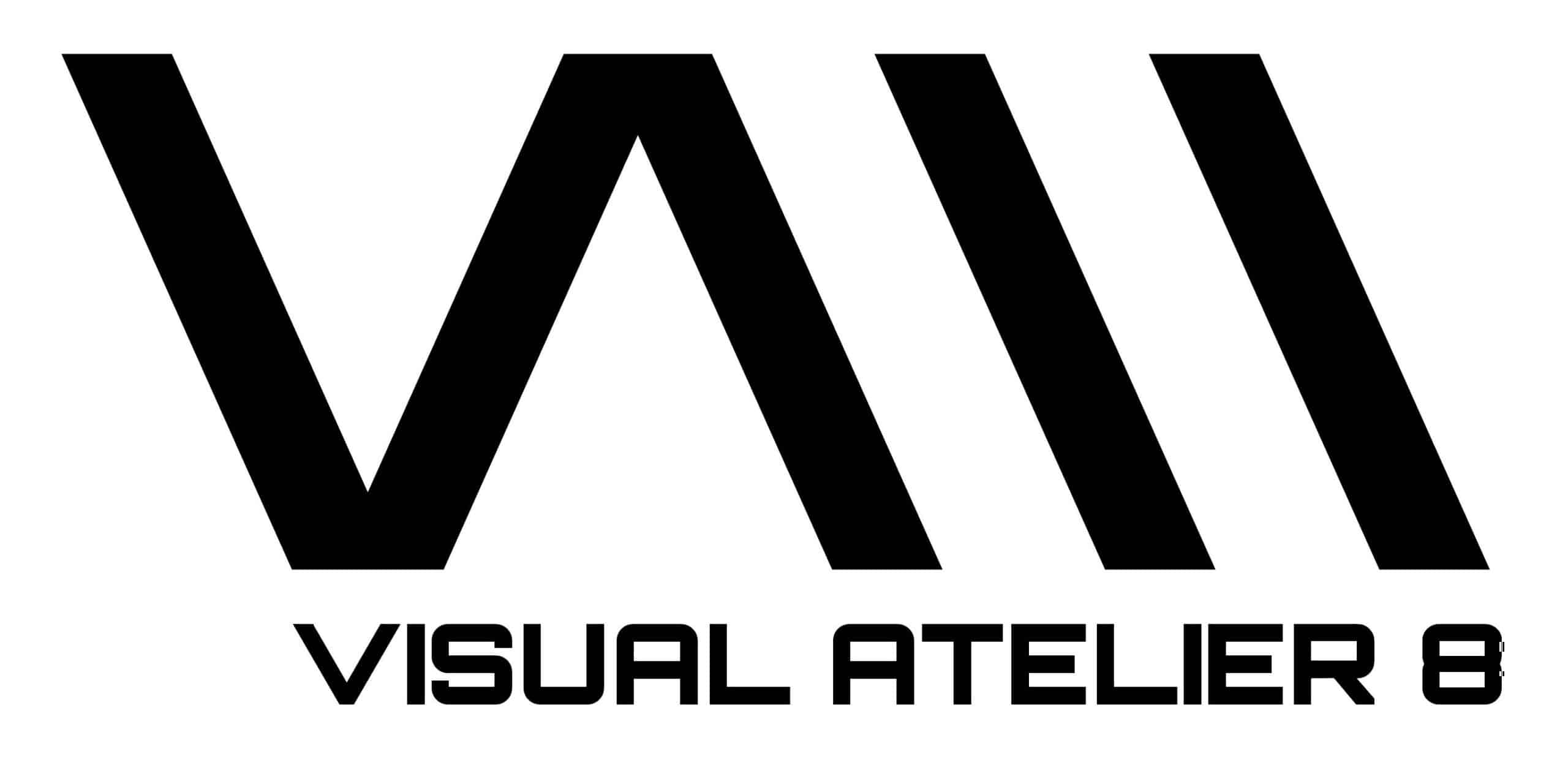
You are one of the first artists to start creating a new form of art by using computer tools back in the 80s. Why did you choose to explore these “still-virgin” territories and what difficulties did you encounter to artistically express yourself?
I entered the Paris School of Fine Arts in 1978. I learned the basics of drawing and sculpture. As regards painting and the avant-garde, my feeling was that the avant-gardists had explored all of the possible avenues in graphic representation and abstraction. And for a young artist, creating a new pictorial approach with oils was very difficult. In the early 1980s, computing was becoming increasingly present in the media and people began to talk about the information society.
Computing was yet to be explored by contemporary creative artists. I understood that computer tools were going to be, for me, the basis for a structurally original approach. These possibilities seemed unlimited and the transformations unending. They represented a fabulous dictionary of forms and colors, on whose basis I could work on the image, modify it, and regenerate it. About the difficulties, I have encountered, was the access to computer tools that didn’t exist at the School of Fine Arts in the 1980s.
Only scientific laboratories and television networks had access to these computer tools. Determined in my artistic approach, I succeeded in gaining the confidence of engineers at the French National Center for Scientific Research (CNRS). Thanks to them, I gained access to the Optics Center, from midnight to six in the morning, to some big computers, and with these computers, I was able to develop my first digital works around the theme of nature and artifice.
Also, it wasn’t easy, for most artists were quite reticent and French art circles proved to be highly skeptical about these new technologies, whose importance had not yet been gauged. That is why, in this not very stimulating climate, I quite logically headed to the United States, where I was offered facilities more in line with my ambitions in the visual arts.

The intrinsic fusion of science and art allows you to make the immaterial to appear tangible. Can you introduce us to the technical process behind your work?
The great difficulty of working with computers is that these techniques are evolving all the time. I realized that I couldn’t continue to work any longer alone. That is why I am surrounded by a team of specialists with technical skills that allow me to make these large facilities in different countries.
For example for “Digital Supernova”, I asked Cyrille Henry to develop the software. It took two years for the development and the test of the software. The software was created to be adapted depending on the size of the different spaces where it is shown. I collaborated with Voxels Productions / Nicolas Gaudelet which is the interface between my artistic ideas and adapting the software. Voxels Productions took care of the whole technical production of this installation.
I designed the idea of projection and Voxels Productions studied how to make it possible: which type of equipment is required, where to place the projectors and helped to set-up the installation in order to make it looks like I intended it. About the different textures and colors, we worked six months in advance of the event to succeed. Then, on-site in Rodez, there was during five days, important work to synchronize the 10 video projectors and to test the different patterns.

You invite the audience to get physically immersed and interact with your poetic work from different perspectives. What human senses should your work activate?
Yes, I like to create an immersive installation. Immersion is a central concept in my work because it gives the viewer new and unusual experiences in art and enriched the world of emotiveness. I am interested in developing multi-sensory creations that stimulate all the senses (sight, hearing, smell). Viewers moved about in a mobile visual universe—something that can be destabilizing or disorienting.
My works also imply a part of the fun (or a playful dimension), because of the interactivity. I exclusively employ sensors that physically involve one’s body and its mobility in space. Either lived by a spectator on his own or by a group, always creates surprising and unexpected results. I achieve this by collaborating with other artists, such as composers Jacopo Baboni Schilingi and Michel Redolfi. They imagine music in a relationship with the images. Music magnifies and amplifies the work.

In your latest project “Digital Supernova 2019“ you create a generative virtual reality artwork into Cathédrale de Rodez. By interconnecting a place of cult with a technological installation what message should this work bring to the public?
I like to create installations in atypical places, like in Church and Cathedrale. Throughout the history of Western culture, churches have been spaces for the expression and representation of artworks and artists. Paintings, sculptures, frescoes, stained-glass windows… the tradition continues today with contemporary artists.
The church is not a neutral space like a museum or a gallery. The work can’t be isolated from the context. A dialogue is created between the consecrated place and contemporary work. I revisit trough the digital, history, culture and architecture of the place. My installations highlight the site’s architecture. The light from the digital installation is in resonance with the light from the stained glass windows.
What is interesting about these installations, is that it allows us to introduce art in a place where we don’t expect it, and to be visible free by people who may don’t go to museums or galleries. I want to immerse the public in a magical atmosphere that invites a spiritual elevation, contemplation, and dream.

“The artist is always beginning. Any work of art which is not a beginning, an invention, a discovery is of little worth”, wrote the great poet Ezra Pound. To what extent does Art prepare society for the future? Is the role of artist spurring development?
Art reflects the society where we are living. He has the power to force consciences. In 1910, Marcel Duchamp and Fernand Léger perfectly demonstrated the machine world and the industrial society. In 1950, Andy Warhol and Pop Art, then in 1960, Arman, César and New Realism are directly linked to a consumerist society. Digital technology is omnipresent today. It conditions our life, our environment.
These technologies are changing human relationships on a global scale. Data flows, the multiplicity of information exchange, networks that weave the world, these are the invisible networks that reveal my creations. The forms that emerge from the computer in real-time, reflect the new forms of contemporary life. Another example, my virtual gardens “Sur-Natures” (2000), “Fractal Flowers” (2008), “Trans-Natures” (2012) or “Extra-Natural” (2016) reflect our increasingly conditioned nature.
When people see my creations, I hope that they will question himself about this notion of possible artificial life today and about his own relationship with nature. Digital art can explore new territory and it is capable of regenerating new ideas. By using digital tools, I have the feeling of being in tune with my time creating a new poetic universe able to lift emotions. I try to be an illustrator of my time.

Give us please your personal definition of evolution.
Evolution is the biological or cultural ability to adapt to an environment using reasoning and tools. These increasingly sophisticated tools have generated technology that can drive progress. Today, computer technology extends certain functions of the brain and nervous system: the processes of acquisition, storage, transformation, and transmission of information.
In a sense, it is the very process of thought that is thus prolonged and amplified. Nanotechnologies and biotechnologies can improve the human condition. The entire problem is in not having these forms of technological progress escape human control and in man not being enslaved by the machine…
We are living in an era where artificial life is becoming more and more realistic. Which changes in the art scene and generally in the society are you expecting in the next 20 years?
In the coming years, I imagine that artists will become more and more interested in the possibilities of AI, in all creative fields: paintings, drawings, sculptures, new media, music, cinema, architecture, design, graphics… If we look at the history of painting, we see a series of experiments that push painting to minimalism. The artists of the artificial revolution confront art to infinity. Robotic creation pursues the idea of liberating art from the artist’s hand.
I think that in the coming years, artists will push their research on AI even further in order to try to pierce its limits and answer the question “Can artificial intelligence be creative and independent of the artist?”. In the years to come, I will also imagine works of art that are increasingly interactive and evolving. The work, like the exhibition, will no longer be fixed but in constant evolution. More generally in society, all fields, scientific, industrial, domestic, cultural, are now invested by artificial intelligence.
In the medical field, for example, research is increasingly focused on exoskeletons for disabled people who use the signals emitted by their brains. These signals are interpreted by the machine to achieve the intentions of the disabled person who can then walk for example. I think that in the future, each person could be equipped with an implanted device to transmit brain signals to a computer. We can be fully connected to our environment. We can imagine that our body will be increasingly robotized, which implies many political, legal and ethical debates to come.

All images courtesy of Miguel Chevalier, shared with permission
For more information, visit the artist Website // Instagram // Facebook

